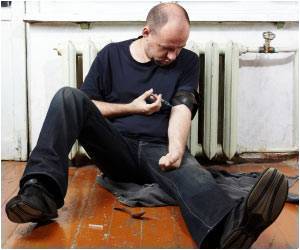Building new platforms for the testing and development of new drugs for safety and efficacy is more predictable for human physiology.

‘The new heart-on-a-chip fabrication method gives great uniformity, doesn't alter the properties of the hydrogel, and is faster than the old process.’





Co-lead author Dr Lisa Scudder said: "One of the major challenges in drug discovery and development is failure at the clinical testing stage due to cardiac toxicity. A way to overcome this is to develop new preclinical tests for new drugs using engineered tissues that mimic the native organs of the human body such as the heart." Co-lead author Dr Janna Nawroth said: "Our work focuses on building new platforms for the testing and development of new drugs for safety and efficacy, which are more predictable for human physiology. We do this by engineering functional units of human organs, using human tissue. For heart on a chip units, we strive to build a tissue that is as contractile and organized as the human heart, so we can measure contractile force - a major determinant of heart pumping performance.
"The chip we've made is an extension of our previous work, which established a new platform using the miniaturised structural formation of cardiac muscle on a cantilever of hydrogel. We use hydrogel because its mechanical properties are similar to the extracellular matrix of the heart. This pre-patterned substrate results in an organised growth of cardiac muscle. The end goal is to put these tissue structures into a microfluidic environment, where we can closely regulate and monitor the flow of the new drug being tested."
However, for these chips to become a next-generation tool for drug development and biomedical research in industry, they need to be manufactured on a large-scale continuous, automated, and quality controlled basis, as opposed to the small batch manufacture used in academic research.
Dr Scudder said: "The existing way of engineering cardiac tissues involves using photomasks, stamping, and manually moulding gelatin to create patterns in the hydrogel for tissue alignment, but this was taking too long and was not practical for our chip manufacturing needs. Our new heart-on-a-chip fabrication method uses a UV laser to pattern the hydrogel, employing riboflavin to sensitise the gel for optical ablation. This patterning method then allows the cardiac cells to align into organised laminar tissue structures like in the native heart. The UV micropatterning method creates features on the gel much faster, but with the same resolution and reproducibility, as traditional moulding techniques."
Advertisement
Principal Investigator Professor Kevin 'Kit' Parker said: "Our team has moved aggressively over the last several years to develop organs on chips that are amenable to mass manufacturing. This advance is part of our strategy of building systems so that the pharmaceutical scientist is fighting the drug, not the chip."
Advertisement
"This method could be useful for manufacturing other organs-on a chips, such as a brain or skeletal muscle-on-a-chip. In the future, we hope to expand on this fabrication method to mimic disease states like fibrosis, or to create more complex three-dimensional tissue structures that could provide new tools for the preclinical drug development process."
Source-Eurekalert










